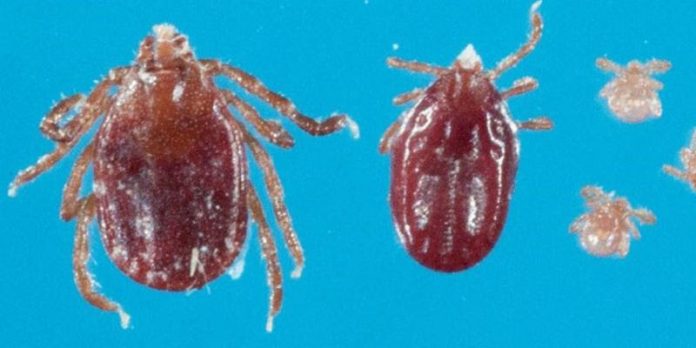HARRISBURG, Pa. — Tests by the National Veterinary Services Laboratory in Ames, Iowa, have confirmed the presence of Asian, or longhorn tick, Haemaphysalis longicornis, in Pennsylvania.
An invasive species that congregates in large numbers and can cause anemia in livestock, the tick was discovered on a wild deer in Centre County.
It is known to carry several diseases that infect hogs and cattle in Asia. So far, ticks examined in the U.S. do not carry any infectious pathogens.
Easily confused with other tick species, including the rabbit tick, which is common in the Eastern U.S., the species’ distinctive “horns” may not be visible without a microscope.
The Asian tick infests host animals in dense clusters of numerous ticks. Female Asian ticks reproduce asexually, so a single tick can reproduce and lay 2,000 eggs after feeding on a host.
Hosts
Cattle, pets, small mammals, birds and humans are all potential hosts.
“Even experts have difficulty distinguishing among tick species, so it is important to take precautions to protect pets, livestock and family members from becoming a host for ticks of any kind,” State Veterinarian Dr. David Wolfgang urged.
“Scientists don’t yet know how this species will adapt to the North American climate and animal hosts, but we know it survived New Jersey’s winter and has infested sheep and cattle in this region.”
“Ticks can be found in your own backyard, so it is essential to wear long sleeves and pants, use insect repellent containing DEET to help keep you safe from ticks and the diseases they carry. It is also important to check yourself and your pets for ticks, as pets can bring ticks indoors,” said Secretary of Health Dr. Rachel Levine.
Native to East and Central Asia, the tick was originally identified in the U.S. in New Jersey, where it was found in large numbers in sheep in Mercer County in 2017. It has also been found in Arkansas, New Jersey, New York, West Virginia and Virginia.
Prevention
Wolfgang recommends examining animals on a regular basis and checking for ticks after being outside to prevent tick bites and disease transmission. Livestock producers and pet owners should consult their veterinarians to develop tick prevention and control appropriate to their specific animals.
To reduce tick habitat, maintain a 9-foot distance between lawn or pasture and wooded areas, keep grass height low, and remove weeds and brush bordering wooded areas.










